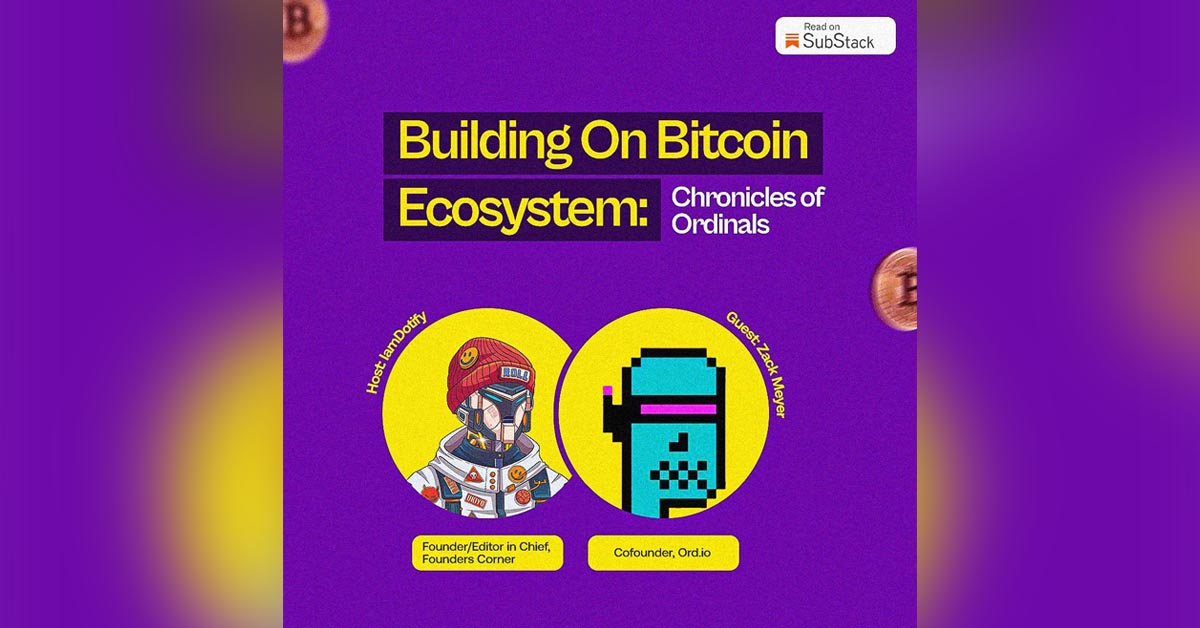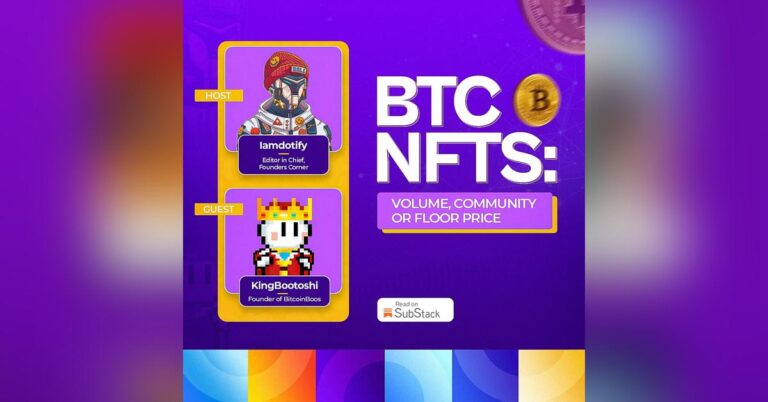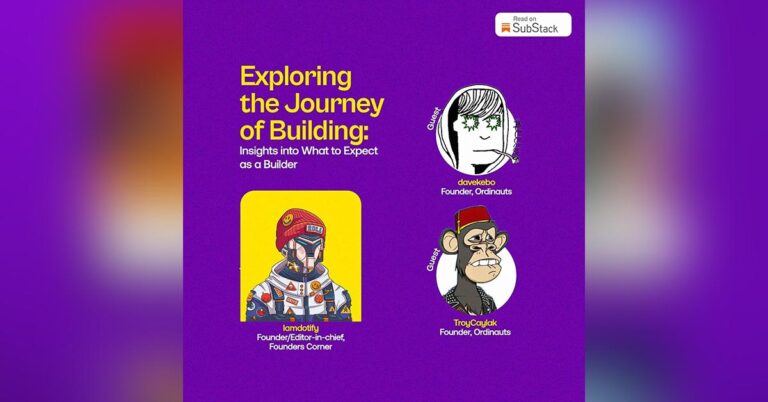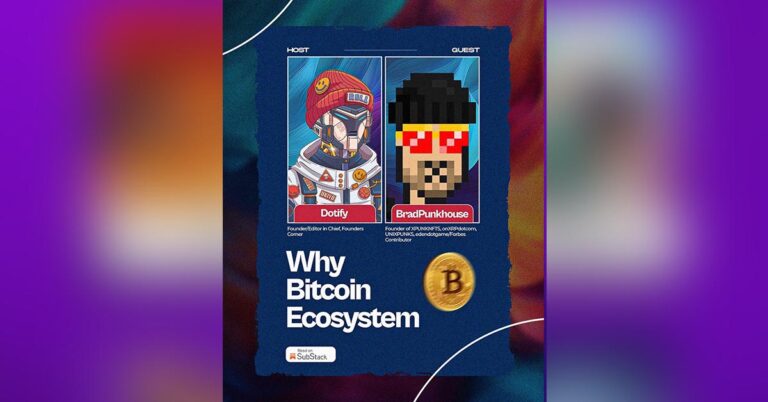What is Ord.io? How did it all start?
It’s been an interesting journey so far. It’s just Leo and me handling everything at the moment; we haven’t expanded our team yet. We’re primarily focused on observing market shifts and crafting features that resonate with users. This space evolves constantly, so we don’t adhere to a fixed long-term roadmap. We iterate regularly, focusing on impactful features.
Our project, ord.io, serves as a Bitcoin ordinals Explorer. It’s a platform allowing users to explore the latest inscriptions, view profiles, and engage in discussions around these inscriptions. We’ve integrated features like upvoting and a trending feed to showcase popular ordinals. It’s a space where collections can organically promote themselves. Each inscription page hosts a comment feed for discussions on specific ordinals.
The inception of this project dates back to February when the concept of ordinals gained momentum. Leo approached me to collaborate on this Explorer. I had previously dabbled in side projects related to Ethereum NFTs during my school days, which is how I first connected with Leo. I developed websites for the Crypto Skulls project, including a skull tracker website allowing holders to generate QR codes for their skulls, which could then be placed on stickers to appear on a map when scanned, creating an interactive leaderboard. Leo, a significant holder in that project, was how our initial connection expanded beyond Twitter.
In February, Leo messaged me, expressing interest in discussing ordinals. Initially, I had peripheral knowledge due to my involvement in a web two startup, leaving me little time for crypto activities. However, as I delved deeper into the concept and Leo pitched his ideas, my interest grew. What began as an informal side project gradually gained traction, leading to our March launch. We worked on it during evenings and weekends for several months, continuously adding features. By May, we recognized its potential and realized that to compete seriously, full-time commitment was essential. That’s when I made the decision to quit my job and focus entirely on this project.
Regarding brand development, Leo and I agreed on a Cipher punk aesthetic, focusing on a clean, user-centric approach. We aimed for a sleek, ad-free experience, prioritizing user-desired content. In the realm of Web 3, particularly in Bitcoin, user experience was often neglected. While Bitcoin focused on security and long-term value, the user interface and experience were overlooked.
Bitcoin’s maximalist culture tended to resist innovations perceived as threats to its core value, unlike Ethereum, which fostered a more experimental environment. This resulted in a lack of refined user experiences in Bitcoin products. However, projects like ordinals, is changing this narrative, signifying a shift toward significant development efforts in Bitcoin to enhance user experiences and drive innovation. Since committing full-time to this project around May, we’ve witnessed substantial growth.
Understanding of Ordinals/Inscriptions
So, the way I consider it is almost like a three-pronged approach. Firstly, you have the typical Ethereum or Solana NFT use case, which transfers well to Bitcoin through ordinals. It involves having a collection, breaking it into individual pieces like art or images, and distributing them to holders for trading, similar to Ethereum use cases. While the mechanics behind Ethereum contracts and ordinals differ significantly, from an end-user perspective, they seem very similar. Bitcoin NFTs have the potential to replace what Ethereum NFTs and other platforms are doing.
Apart from that, two critical aspects make Bitcoin ordinals better suited than Ethereum or Solana. Firstly, the storage—most ordinals have content inscribed natively on Bitcoin, which offers a substantial security layer. A significant percentage of Ethereum NFTs are simply images hosted on centralized servers like AWS. At best, they’re stored on decentralized platforms like IPFS or Arweave, but inscribing directly into Bitcoin offers a higher level of security. Knowing that something is on Bitcoin, the oldest blockchain and internet money, provides a sense of longevity and security.
Lastly, the rare SATs aspect of ordinals is unique. Ethereum contracts lack additional metadata beyond their age, whereas ordinals offer opportunities to tie collections to rare SATs, adding an extra level of interest and uniqueness. For instance, the work with the Bitcoin ninjas collection, which seems to have a variant related to pizza SATs, adds another layer of appeal. Features like SAT names also add an extra dimension to Bitcoin NFTs that Ethereum or Solana NFTs currently lack.
Challenges Faced With Ord.io
For me, one of the significant risks was the newness and youthfulness of the space. Initially, when I saw tweets about CryptoPunks being inscribed on bitcoin, I found it amusing, assuming it would be a passing trend. There’s always that uncertainty, hoping what we build will have staying power and enduring interest. In the crypto realm, there’s often sudden activity followed by a sudden drop-off. So, ensuring we create something that lasts and sustains interest was a major concern.
On the technical front, accommodating arbitrary HTML inscriptions was a substantial challenge. Ensuring user safety is paramount, especially as we’re not a direct financial product. There’s a myriad of intricate edge cases to consider. Ordinarily, when building a website, no user-generated code runs. In Ordinals, some compelling content involves HTML or JavaScript inscriptions that set us apart from Ethereum NFTs and other platforms. To handle such content, we need robust protections to sandbox the code, guaranteeing it won’t affect our end-users adversely. From a technical standpoint, this posed a unique challenge compared to what I’m accustomed to.
Long Term Vision for Bitcoin Ecosystem
I’m enthusiastic about the renewed energy in building on Bitcoin. In the long run, regarding ordinals, I believe there’s much yet to unfold. The prevailing use case for ordinals might not solely revolve around NFTs. Rare SATs could potentially dominate as the primary use, or perhaps ordinals could serve as a repository for everlasting sensitive information. For instance, ensuring perpetual access to published books by inscribing them on Bitcoin appears to be an excellent application. There’s uncertainty, but I foresee at least one of these possibilities gaining significant traction, if not all.
Overall, what excites me the most is the evolving developer ethos within Bitcoin. It’s not just about hypothetical security scenarios or optimizing hashing algorithms. My coding background primarily involves building websites, so I might not contribute much to Bitcoin’s security and scalability aspects. However, my skill set aligns better with creating innovative products on top of the existing infrastructure. Recent developments like bit VM, drivetrain debates, and the Lightning Network showcase new Bitcoin layers more suitable for further development than the core L1 of Bitcoin. This aspect of evolving development on Bitcoin is what truly excites me.



